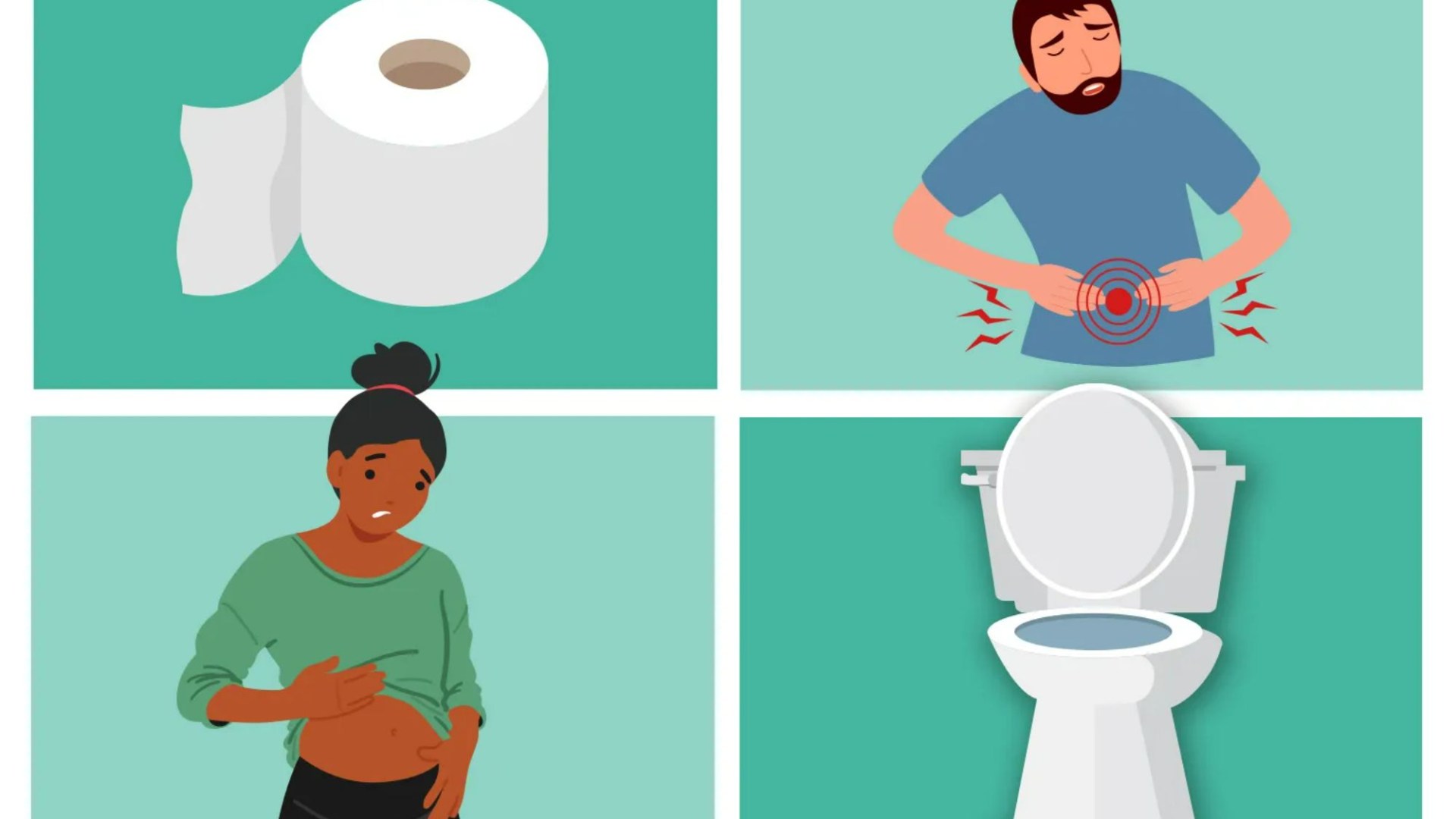Health & fitness
What is ‘silent walking’? TikTok trend has fans unplugging for their favourite hikes

TIKTOK have coined a new trend known as silent walking.
Gen Z may have divided opinion online with the silent walking trend, but the benefits to your wellbeing cannot be ignored.
What is silent walking?
Silent walking is the act of taking a walk without noise.
There’s no conversation, and no phones to distract yourself with music or a podcast – it’s just you and the world around you.
The trend went viral after lifestyle influencer Mady Maio, shared her reason for a silent walk on TikTok in June 2023, accidentally starting a “movement” of young walkers.
How it began
Walking in intentional silence has long been associated with honouring serviceman or indeed the dead.
But this walk acts as a kind of dopamine detox to promote mindfulness to perk you up.
The Los Angeles based podcast host Mady Maio, 28, claims to have started the ‘movement’ and told over 50K of her followers that they should try it sometime.
She said: “My sweet boyfriend challenged me to walk without distractions.
“No ear pods, no podcasts, no music just me, myself and I.
“And look, the first two minutes are mayhem, your mind is racing and you’re going to have anxiety.
“Then something happens after two minutes where your brain just gets into this flow state, and finally you can hear yourself,” she exclaimed.
Mady’s silent walk video, which has since been removed, racked up over 500K in views and inspired others to take up her wellness trend.
The craze has continued to take TikTok by storm.
With a daily flurry of users uploading their silent walks to TikTok, silent walking is now being referred to as a wellness trend.
Benefits of silent walking
There are both physical and mental benefits from silent walking.
Breathwork specialist and meditation coach, Jess Parkinson explains:
“Simply walking with your own thoughts and taking in the world around you can be hugely beneficial in terms of calming the nervous system and shifting your perspective from constant screen use.
“A traditional walking meditation might see you walking and taking in the world around you or focusing on your breathing as you walk.
“When you remove external stimuli such as a podcast, you’re more likely to hear what’s going on around you, and connect with your senses in a way you wouldn’t otherwise.
“Connecting with the senses is beneficial and is often used in mindfulness techniques to help calm the mind, relax the body and help a person feel more grounded.
“You’re also more likely to breathe more effectively too which is another proven and effective way to help relax and regulate the nervous system.
“It should be noted that for some, this task that might simple, but could be challenging for others, especially for those with anxiety disorders, or Post Traumatic Stress Disorder (PTSD),” she explained.
Divided opinion
While some have praised Mady, including one user who took to the comment section to say: “Mady Maio you started something great!”
There are many others who mocked the trend, and said that Mady has taken credit for something that has been around for a long time.
One said: “Gen X was silent walking before it was cool.”
While another said: “Omg… this is not new… get over it.’”
Womens Workouts
Chest and Tricep Workout Female | Fitness #fitness #fitnessmotivation #workout #chestworkout
Health & fitness
I was desperate to get rid of my eye bags for my 50th – but €1k ‘botched op’ left me like a basset hound & €10k in debt

A MUM’s bid to get rid of her eye bags for her 50th birthday backfired – when a “botched” op in Turkey left her with DROOPING eyelids like a basset hound.
Anita Brawders decided to treat herself for her major milestone last year and booked a surgery to have her lower eye bags removed in Turkey.
The now 51-year-old paid €1,000 for the operation in which surgeons made a small incision under the eye and pulled the skin up.
However, within days of arriving back home, Anita noticed the area below her eyes was beginning to droop – exposing her lower eyelid.
The bar manager returned to Turkey for revision surgery but claims the lower lids dropped once again within a matter of days.
Devastated, the mum-of-three said she looked “disfigured” – and missed out on family events, as well as her 50th, due to her “botched” appearance.
The mum-of-three has since had another revision surgery in Canada that was successful – but caims she’s spent more than €10,000 on operations, flights, and time off work.
Now, the mum, who lives in Kilkenny, Ireland, wants to warn others against travelling to Turkey for surgery.
Anita said: “About three months after having my upper eyelid surgery in Lithuania, I started noticing my eyebags.
“I was coming up to 50 and just wanted to feel better about myself. It was a little 50th birthday present to myself.
“I started researching about six months beforehand and this clinic came up in Turkey. Everything looked good with the clinic.
“After coming back home, it just didn’t seem right. It wasn’t healing. I took the plasters off and it didn’t look right.
“I started texting my co-ordinator and they said it was just part of the healing process.
“Then about three weeks after my surgery, they decided to bring me back and reassured me they could fix what had happened.”
Anita opted to go under the knife again in Turkey to help fix her right eye but within four days of arriving home, the skin dropped.
‘Ruined my 50th’
Anita said: “It was devastating. I could see no end to it. I lived with this for a year.
“I missed out on a lot because of it. I didn’t have my planned party as I was supposed to.
“I had weddings that I missed out on. My family were shocked. I felt disfigured and I looked disfigured.
“I felt like I had been botched. It ruined my 50th.
“I had no self-esteem. I wouldn’t go anywhere but working at my own bar. I felt like I couldn’t go out.
“I hated looking at myself in the mirror. You can’t hide it, it’s the first thing you see. I didn’t want to live like that for the rest of my life.”
After a year of living with her ‘botched’ eye, Anita underwent revision surgery in Canada in August to help prevent the skin from dropping again.
I regret going to Turkey about my surgery. You’re signing things in Turkey, you have no idea what you’re signing. It’s dangerous.
Anita Brawders
Anita said: “It looks amazing compared to what it did look like. It changed my life.
“I’m in the healing process at the moment. I’m doing well, I’m not sure if I have to go back for another procedure. He saved my life.”
Anita claims the clinic offered her €2,400 in compensation after the operation – which she described as “an insult”.
Anita said: “It was an insult what they offered. That’s not going to cover half my costs.
“I spent money on flights, wages, my business, taking time out of work – it didn’t near cover my cost.
‘Feel so let down’
“The surgeon never took responsibility for his actions. They told me every procedure is a risk and you’ve signed your paperwork.
“I haven’t heard back from them since. I feel so let down. I don’t want them to do this to anyone else.
“I regret going to Turkey about my surgery.
“You’re signing things in Turkey, you have no idea what you’re signing. It’s dangerous.”
Womens Workouts
40 MIN FULL BODY WORKOUT || Pilates with Weights & Band

Hope you enjoy this new 40 Minute Full Body Pilates Workout featuring a light set of hand weights (1kg – 2kg) and a mini resistance band. Don’t worry if you don’t have any of the equipment as you can still enjoy the class without it! You could also get creative and use household objects like bottles of water (or wine :P) or cans of vegetables to act as weights. Get ready to sweat and most importantly, have fun! 😊
My Outfit Details:
🌸 Sports Bra from Gymshark http://gym.sh/Nicole-Adapt-Marl-Bra-Orange
🌸 Leggings from Gymshark http://gym.sh/Nicole-Vital-Leggings-Grey
♡ INSTAGRAM: @movewithnicole
♡ EMAIL: movewithnicole.yt@gmail.com
♫ Music from https://www.epidemicsound.com/
—
DISCLAIMER:
Please consult your doctor or health care professional before starting this workout. If you experience pain or discomfort at any time during this workout, you should stop immediately. By performing these exercises, you do so at your own risk. By using this video, you understand and agree that Move With Nicole will not be held responsible or liable for any injury or loss you may suffer as a result of this workout video.
source
Health & fitness
The 4 signs of ultra-common disease you’ve never heard from ‘stitch-like pain’ to changes on the loo

IF YOU notice a ‘stitch-like’ pain in the lower part of your tummy or changes to your bowel habits, you might put it down to IBS or eating something funny.
But these uncomfortable symptoms may be caused by a little-known gut condition that’s actually surprisingly common.
Known as diverticular disease, it affects a whopping one in three people in their lifetime, according to Guts UK.
Despite being so common, few people could name the symptoms it causes or even know of its existence, the digestive health charity warned.
As a result, people with hidden diverticular disease may not get diagnosed and can continue to suffer agonising symptoms.
In honour of Diverticular Disease Awareness Week, Guts UK called on Brits experiencing telltale signs of the condition to get them checked out.
Read more on bowel habits
The often painful disease is caused by small pouches forming in the wall of the colon, known as diverticula.
Although the exact cause of diverticular disease is still unknown, it mostly affects people over the age of 40 and causes a range of digestive symptoms – such as bloating and stomach pains.
Common symptoms of ultra-common diverticular disease include:
- Lower abdominal pain
- Bloating
- Change in bowel habits – such as diarrhoea or constipation
- Mucus or blood in your poo
The pattern of symptoms tends to differ from one person to the next, but most will get crampy pains that come and go.
The pain is also commonly focused in the left side of the belly, where the diverticula most often form, though some people may get pain on the right side.
The pain and bloating can often start after eating food and may get better after going to the loo or passing gas, Guts UK said.
Meanwhile, many people with the condition can see changes to their poo habits, being struck with diarrhoea one day and constipation the next.
It’s important to get symptoms of diverticular disease checked out, as they’re similar to symptoms caused by more serious conditions such as bowel cancer.
Don’t assume that they are solely caused diverticular disease and get them checked out, the charity urged.
Sophie Miller, 23, from the north of Scotland, shared her experience with diverticular disease after being diagnosed with it in 2023.
She said: “I’d been having stomach pains, an intense stitch-like, uncomfortable pain around my bowels and I noticed blood when I went to the toilet.
“I was really embarrassed, so I didn’t say anything to anyone for months.
When should I be worried about my bowel habits?
Everyone’s poo habbits are different.
Anything from three times a day to three times a week can be in the normal range.
Get to know what is normal for you, so you know when something is wrong.
Any changes to our toilet habits, whether it be going more frequently or less, experiencing loose stools, diarrhoea or constipation, are considered a potential warning sign of bowel cancer.
If there any changes to your ‘normal’, it might be something to bring up with a doctor.
The changes could also be caused by digestive conditions like irritable bowel syndrome (IBS).
It can cause stomach cramps, bloating, diarrhoea and constipation, with symptoms coming and going or lasting for days or weeks.
Everything causing a change in your bowel habits can be scary – they can be altered by how much water you’re drinking or what you’re eating.
NHS guidance recommends you speak to a GP if you notice a persistent change in your bowel habits for three weeks or more.
“Eventually the pain became too intense and I had to go to hospital and, after further tests, I was diagnosed with diverticular disease.
“I’ve since had help to manage my physical symptoms, as well as the anxiety I used to suffer from as a result of my flare-ups.
“I’d encourage anyone experiencing symptoms to see their doctor. If it is diverticular disease then they can help you manage it.”
Most people with the disease will never have any complications from it and can carry on with their lives as normal.
But some people may develop symptoms that can become difficult to live with.
And in some cases, those with diverticular disease can get complications like inflammation, high temperature, nausea, vomiting or serious bowel conditions, such as colitis or bowel perforation.
NHS England stats show that there were over 140,000 hospital admissions for diverticular disease in the last 12 months and this number is on the rise.
People can develop diverticulitis when one or more diverticula become inflamed or infected.
This can cause symptoms like worsening abdominal pain, a high temperature, nausea and being sick.
You should seek medical help immediately if you experience any of these.
Thought we still can’t be sure what exactly causes diverticular disease, it is more common with people with an unhealthy weight.
It’s also thought to be linked to lifestyle factors.
Although it’s more likely to develop after the age of 40, cases are now on the rise in younger people, the charity warned.
While there is no specific medical treatment for diverticular disease, patients can manage their symptoms and reduce the risk of them worsening by tweaking their diet to eat more fibre and losing weight if appropriate.
Diverticular disease explained
- Diverticulum: A diverticulum is a small pouch about 1cm in size which sticks out from the wall of the large bowel.
- Diverticula: This refers to more than one diverticulum. The most common site for diverticula is on the lower part of the large bowel on the left-hand side. They are permanent unless the affected part of the bowel is surgically removed.
- Diverticulitis: Diverticulitis means the condition that occurs when a single diverticulum or several diverticula become inflamed or infected.
- Diverticulosis: You may have heard the term diverticulosis, which means the presence of diverticula, this is not the same as diverticular disease. Most people with diverticulosis do not have, or go on to develop, diverticular disease. The great majority of people with diverticulosis will live out their lives never having symptoms. Having symptoms is diagnosed as diverticular disease.
Source: Guts UK
Doctors may also prescribe simple painkillers, medicines to reduce stomach cramps, constipation or diarrhoea, and antibiotics if necessary.
Suzanne Hudson, CEO at Guts UK, said: “It’s alarming to think that, during their lifetime, one in three people may be living with diverticular disease without knowing it.
“We want to empower individuals to understand their gut health better and to seek help if they experience any symptoms.
“Awareness is the first step towards improved quality of life for millions of people.”
You can use Guts UK’s Poo-torial tool to better understand your own toilet habits and check your poo for concerning changes.
Womens Workouts
Valentines Day fit 💓 #daydate #hiking #valentinesday #1stphorm #fitness #exercise #leggings
Health & fitness
Girl, 13, died suddenly with cold symptoms just hours after being admitted to ‘ineffective’ hospital

A TEENAGER with cold and flu symptoms died just hours after being admitted to hospital.
Chloe Longster, 13, was suffering from a cough and pain in her lower ribs in November 2022.
She was taken to Kettering General Hospital in Northamptonshire, where she passed away 18 and a half hours later.
Her parents say they witnessed “numerous failings” in Chloe’s care.
The schoolgirl’s cause of death was recorded as sepsis and multiple organ failure. She had no underlying health conditions.
An inquest into the year nine pupil’s death begins later today.
Mum Louise said her daughter, a keen dancer from Market Harborough, Leicestershire, was previously “full of energy” and “healthy”.
Neither she nor her husband Dave were informed of a sepsis screening or told Chloe had not been given antibiotics, despite her visible illness and distressing cough, they allege.
She was also reportedly never given an identification bracelet.
Louise, who works in children’s social care, claims she repeatedly raised concerns about Chloe’s worsening condition but her cries for help were dismissed.
Louise, 40, and Dave, 50, a mechanic, told the Daily Mail: “What happened to Chloe could happen to anyone.
“We were proactive, we asked questions, yet her death was not prevented.”
The Care Quality Commission (CQC) visited the hospital a month later and downgraded children’s services from ‘requires improvement’ to ‘inadequate’.
Inspectors cited concerns around staff numbers, dirt levels and the treatment of sepsis – a life-threatening reaction to an infection.
Charlotte Rudge, CQC deputy director of operations in the Midlands, said the watchdog found the trust had “ineffective systems in place to assess and treat people at risk of sepsis”.
She added: “Staff didn’t ensure people received a timely assessment to determine if they were at risk of sepsis.
“If they were at risk, they didn’t always receive treatment as quickly as they should have to help prevent them from coming to harm.”
Chloe brought so much joy, life, happiness and kindness to all those that she came into contact with
Dan Cleary
A separate review by the East Midlands Clinical Senate, commissioned in the same month Chloe died, found “training around quality improvement and learning from incidents in general appeared to be lacking”.
And last year, a BBC investigation highlighted more than 50 cases where families raised serious concerns about the care of their children.
This included one-year-old Jorgie Stanton-Watts, who died from dehydration and sepsis in 2016.
A coroner found her treatment amounted to neglect.
A follow-up inspection noted changes in the hospital’s children’s services. It is now rated as ‘requiring improvement’.
Julie Hogg, the chief nurse at the University Hospitals of Northamptonshire NHS Group, which oversees Kettering General Hospital and Northampton General Hospital, said: “We offer our condolences to Chloe’s family for their tragic loss.
“We are sorry for any failings in the care we provided and we await the coroner’s conclusion.
“We started our investigation processes in the hours after Chloe’s death, culminating in our national reporting in December 2022.
“We acknowledge this could have been done more quickly.”
What are the symptoms of sepsis?
SEPSIS is a life-threatening reaction to an infection that happens when your immune system overreacts and starts to damage your body’s own tissues and organs.
Symptoms of sepsis in an adult include:
- Acting confused, slurred speech or not making sense
- Blue, grey, pale or blotchy skin, lips or tongue – on brown or black skin, this may be easier to see on the palms of the hands or soles of the feet
- A rash that does not fade when you roll a glass over it, the same as meningitis
- Difficulty breathing, breathlessness or breathing very fast
Symptoms in a child include:
- Blue, grey, pale or blotchy skin, lips or tongue – on brown or black skin, this may be easier to see on the palms of the hands or soles of the feet
- A rash that does not fade when you roll a glass over it, the same as meningitis
- Difficulty breathing (you may notice grunting noises or their stomach sucking under their ribcage), breathlessness or breathing very fast
- A weak, high-pitched cry that’s not like their normal cry
- Not responding like they normally do, or not interested in feeding or normal activities
- Being sleepier than normal or having difficulty waking
They may not have all these symptoms.
If you think you or someone else has symptoms of sepsis, call 999 or go to A&E.
Source: NHS
A CQC spokesperson added: “The CQC is aware of the sad death of Chloe Longster, who was receiving care from Kettering General Hospital.
“Our condolences are with her family and friends at this sad time.
“We are liaising with the trust to establish the circumstances around Chloe’s death, to determine whether there is any regulatory action we may need to take.
“CQC’s priority, at all times, is the health and wellbeing of people using health and social care services, and all information we receive informs our monitoring of services and future inspections.
“If we’re not satisfied people are receiving safe care, we will not hesitate to take action in line with our regulatory powers.”
Dan Cleary, principal at Robert Smyth Academy where Chloe was a student, described her as “a vibrant, talented and compassionate individual”.
“She brought so much joy, life, happiness and kindness to all those that she came into contact with,” he added.
-

 Womens Workouts2 weeks ago
Womens Workouts2 weeks ago3 Day Full Body Women’s Dumbbell Only Workout
-

 Science & Environment3 weeks ago
Science & Environment3 weeks agoHow to unsnarl a tangle of threads, according to physics
-

 Science & Environment3 weeks ago
Science & Environment3 weeks agoHyperelastic gel is one of the stretchiest materials known to science
-

 Science & Environment3 weeks ago
Science & Environment3 weeks agoMaxwell’s demon charges quantum batteries inside of a quantum computer
-

 Technology3 weeks ago
Technology3 weeks agoWould-be reality TV contestants ‘not looking real’
-

 Science & Environment3 weeks ago
Science & Environment3 weeks ago‘Running of the bulls’ festival crowds move like charged particles
-

 Science & Environment3 weeks ago
Science & Environment3 weeks agoHow to wrap your mind around the real multiverse
-

 News2 weeks ago
News2 weeks agoOur millionaire neighbour blocks us from using public footpath & screams at us in street.. it’s like living in a WARZONE – WordupNews
-

 Science & Environment3 weeks ago
Science & Environment3 weeks agoSunlight-trapping device can generate temperatures over 1000°C
-

 Science & Environment3 weeks ago
Science & Environment3 weeks agoQuantum ‘supersolid’ matter stirred using magnets
-

 Science & Environment3 weeks ago
Science & Environment3 weeks agoITER: Is the world’s biggest fusion experiment dead after new delay to 2035?
-

 Science & Environment3 weeks ago
Science & Environment3 weeks agoLiquid crystals could improve quantum communication devices
-

 Science & Environment3 weeks ago
Science & Environment3 weeks agoQuantum forces used to automatically assemble tiny device
-
News3 weeks ago
the pick of new debut fiction
-

 Science & Environment3 weeks ago
Science & Environment3 weeks agoPhysicists are grappling with their own reproducibility crisis
-

 Science & Environment3 weeks ago
Science & Environment3 weeks agoWhy this is a golden age for life to thrive across the universe
-

 News3 weeks ago
News3 weeks agoYou’re a Hypocrite, And So Am I
-

 Sport3 weeks ago
Sport3 weeks agoJoshua vs Dubois: Chris Eubank Jr says ‘AJ’ could beat Tyson Fury and any other heavyweight in the world
-

 Science & Environment3 weeks ago
Science & Environment3 weeks agoTime travel sci-fi novel is a rip-roaringly good thought experiment
-

 Science & Environment3 weeks ago
Science & Environment3 weeks agoLaser helps turn an electron into a coil of mass and charge
-

 Science & Environment3 weeks ago
Science & Environment3 weeks agoCaroline Ellison aims to duck prison sentence for role in FTX collapse
-

 Science & Environment3 weeks ago
Science & Environment3 weeks agoNuclear fusion experiment overcomes two key operating hurdles
-

 Technology1 week ago
Technology1 week ago‘From a toaster to a server’: UK startup promises 5x ‘speed up without changing a line of code’ as it plans to take on Nvidia, AMD in the generative AI battlefield
-

 Football1 week ago
Football1 week agoFootball Focus: Martin Keown on Liverpool’s Alisson Becker
-
Business1 week ago
Eurosceptic Andrej Babiš eyes return to power in Czech Republic
-

 Science & Environment3 weeks ago
Science & Environment3 weeks agoRethinking space and time could let us do away with dark matter
-

 MMA1 week ago
MMA1 week agoConor McGregor challenges ‘woeful’ Belal Muhammad, tells Ilia Topuria it’s ‘on sight’
-

 Science & Environment3 weeks ago
Science & Environment3 weeks agoNerve fibres in the brain could generate quantum entanglement
-

 News3 weeks ago
News3 weeks ago▶️ Hamas in the West Bank: Rising Support and Deadly Attacks You Might Not Know About
-
Business1 week ago
Should London’s tax exiles head for Spain, Italy . . . or Wales?
-

 News3 weeks ago
News3 weeks ago▶️ Media Bias: How They Spin Attack on Hezbollah and Ignore the Reality
-

 Science & Environment3 weeks ago
Science & Environment3 weeks agoFuture of fusion: How the UK’s JET reactor paved the way for ITER
-

 Science & Environment2 weeks ago
Science & Environment2 weeks agoX-rays reveal half-billion-year-old insect ancestor
-

 News3 weeks ago
News3 weeks agoIsrael strikes Lebanese targets as Hizbollah chief warns of ‘red lines’ crossed
-

 Science & Environment3 weeks ago
Science & Environment3 weeks agoA new kind of experiment at the Large Hadron Collider could unravel quantum reality
-

 Science & Environment3 weeks ago
Science & Environment3 weeks agoA slight curve helps rocks make the biggest splash
-

 News3 weeks ago
News3 weeks agoNew investigation ordered into ‘doorstep murder’ of Alistair Wilson
-

 Science & Environment3 weeks ago
Science & Environment3 weeks agoUK spurns European invitation to join ITER nuclear fusion project
-

 CryptoCurrency3 weeks ago
CryptoCurrency3 weeks agoCardano founder to meet Argentina president Javier Milei
-

 News2 weeks ago
News2 weeks agoWhy Is Everyone Excited About These Smart Insoles?
-

 Science & Environment2 weeks ago
Science & Environment2 weeks agoMeet the world's first female male model | 7.30
-

 Technology2 weeks ago
Technology2 weeks agoRobo-tuna reveals how foldable fins help the speedy fish manoeuvre
-

 Technology2 weeks ago
Technology2 weeks agoGet ready for Meta Connect
-
Business3 weeks ago
JPMorgan in talks to take over Apple credit card from Goldman Sachs
-

 CryptoCurrency3 weeks ago
CryptoCurrency3 weeks agoBitcoin bulls target $64K BTC price hurdle as US stocks eye new record
-

 Womens Workouts2 weeks ago
Womens Workouts2 weeks agoBest Exercises if You Want to Build a Great Physique
-

 Womens Workouts2 weeks ago
Womens Workouts2 weeks agoEverything a Beginner Needs to Know About Squatting
-

 News2 weeks ago
News2 weeks agoFour dead & 18 injured in horror mass shooting with victims ‘caught in crossfire’ as cops hunt multiple gunmen
-

 Servers computers2 weeks ago
Servers computers2 weeks agoWhat are the benefits of Blade servers compared to rack servers?
-

 Technology1 week ago
Technology1 week agoQuantum computers may work better when they ignore causality
-

 Technology1 week ago
Technology1 week agoThe best robot vacuum cleaners of 2024
-

 Health & fitness1 week ago
Health & fitness1 week agoThe 7 lifestyle habits you can stop now for a slimmer face by next week
-

 CryptoCurrency3 weeks ago
CryptoCurrency3 weeks agoEthereum is a 'contrarian bet' into 2025, says Bitwise exec
-

 Health & fitness3 weeks ago
Health & fitness3 weeks agoThe secret to a six pack – and how to keep your washboard abs in 2022
-

 Science & Environment3 weeks ago
Science & Environment3 weeks agoQuantum time travel: The experiment to ‘send a particle into the past’
-

 Science & Environment3 weeks ago
Science & Environment3 weeks agoWhy we need to invoke philosophy to judge bizarre concepts in science
-

 CryptoCurrency3 weeks ago
CryptoCurrency3 weeks agoBitcoin miners steamrolled after electricity thefts, exchange ‘closure’ scam: Asia Express
-

 CryptoCurrency3 weeks ago
CryptoCurrency3 weeks agoDorsey’s ‘marketplace of algorithms’ could fix social media… so why hasn’t it?
-

 CryptoCurrency3 weeks ago
CryptoCurrency3 weeks agoDZ Bank partners with Boerse Stuttgart for crypto trading
-

 CryptoCurrency3 weeks ago
CryptoCurrency3 weeks agoLow users, sex predators kill Korean metaverses, 3AC sues Terra: Asia Express
-
Politics2 weeks ago
UK consumer confidence falls sharply amid fears of ‘painful’ budget | Economics
-

 Science & Environment2 weeks ago
Science & Environment2 weeks agoCNN TÜRK – 🔴 Canlı Yayın ᴴᴰ – Canlı TV izle
-

 Womens Workouts2 weeks ago
Womens Workouts2 weeks ago3 Day Full Body Toning Workout for Women
-

 Travel2 weeks ago
Travel2 weeks agoDelta signs codeshare agreement with SAS
-

 Politics2 weeks ago
Politics2 weeks agoHope, finally? Keir Starmer’s first conference in power – podcast | News
-

 News2 weeks ago
News2 weeks agoUS Newspapers Diluting Democratic Discourse with Political Bias
-

 Sport1 week ago
Sport1 week agoWatch UFC star deliver ‘one of the most brutal knockouts ever’ that left opponent laid spark out on the canvas
-

 Sport3 weeks ago
Sport3 weeks agoUFC Edmonton fight card revealed, including Brandon Moreno vs. Amir Albazi headliner
-

 Technology3 weeks ago
Technology3 weeks agoiPhone 15 Pro Max Camera Review: Depth and Reach
-

 Science & Environment3 weeks ago
Science & Environment3 weeks agoHow one theory ties together everything we know about the universe
-

 News3 weeks ago
News3 weeks agoBrian Tyree Henry on voicing young Megatron, his love for villain roles
-

 Health & fitness3 weeks ago
Health & fitness3 weeks agoThe maps that could hold the secret to curing cancer
-

 Science & Environment3 weeks ago
Science & Environment3 weeks agoBeing in two places at once could make a quantum battery charge faster
-

 Science & Environment3 weeks ago
Science & Environment3 weeks agoTiny magnet could help measure gravity on the quantum scale
-

 Science & Environment3 weeks ago
Science & Environment3 weeks agoA tale of two mysteries: ghostly neutrinos and the proton decay puzzle
-

 Science & Environment3 weeks ago
Science & Environment3 weeks agoHow do you recycle a nuclear fusion reactor? We’re about to find out
-

 CryptoCurrency3 weeks ago
CryptoCurrency3 weeks agoRedStone integrates first oracle price feeds on TON blockchain
-

 CryptoCurrency3 weeks ago
CryptoCurrency3 weeks agoBlockdaemon mulls 2026 IPO: Report
-
Politics3 weeks ago
‘Appalling’ rows over Sue Gray must stop, senior ministers say | Sue Gray
-

 CryptoCurrency3 weeks ago
CryptoCurrency3 weeks agoCoinbase’s cbBTC surges to third-largest wrapped BTC token in just one week
-

 MMA2 weeks ago
MMA2 weeks agoRankings Show: Is Umar Nurmagomedov a lock to become UFC champion?
-

 TV2 weeks ago
TV2 weeks agoCNN TÜRK – 🔴 Canlı Yayın ᴴᴰ – Canlı TV izle
-

 Technology3 weeks ago
Technology3 weeks agoThe ‘superfood’ taking over fields in northern India
-

 CryptoCurrency3 weeks ago
CryptoCurrency3 weeks agoCrypto scammers orchestrate massive hack on X but barely made $8K
-

 CryptoCurrency3 weeks ago
CryptoCurrency3 weeks agoDecentraland X account hacked, phishing scam targets MANA airdrop
-

 CryptoCurrency3 weeks ago
CryptoCurrency3 weeks agoTelegram bot Banana Gun’s users drained of over $1.9M
-

 CryptoCurrency3 weeks ago
CryptoCurrency3 weeks agoVonMises bought 60 CryptoPunks in a month before the price spiked: NFT Collector
-

 CryptoCurrency3 weeks ago
CryptoCurrency3 weeks agoSEC asks court for four months to produce documents for Coinbase
-

 CryptoCurrency3 weeks ago
CryptoCurrency3 weeks ago‘Silly’ to shade Ethereum, the ‘Microsoft of blockchains’ — Bitwise exec
-

 CryptoCurrency3 weeks ago
CryptoCurrency3 weeks agoVitalik tells Ethereum L2s ‘Stage 1 or GTFO’ — Who makes the cut?
-

 CryptoCurrency3 weeks ago
CryptoCurrency3 weeks ago‘No matter how bad it gets, there’s a lot going on with NFTs’: 24 Hours of Art, NFT Creator
-
Business3 weeks ago
Thames Water seeks extension on debt terms to avoid renationalisation
-
Business3 weeks ago
How Labour donor’s largesse tarnished government’s squeaky clean image
-

 News3 weeks ago
News3 weeks agoBrian Tyree Henry on voicing young Megatron, his love for villain roles
-
News2 weeks ago
The Project Censored Newsletter – May 2024
-

 Womens Workouts2 weeks ago
Womens Workouts2 weeks agoHow Heat Affects Your Body During Exercise
-

 Womens Workouts2 weeks ago
Womens Workouts2 weeks agoKeep Your Goals on Track This Season
-

 Womens Workouts2 weeks ago
Womens Workouts2 weeks agoWhich Squat Load Position is Right For You?
-

 MMA1 week ago
MMA1 week agoRoberto Satoshi compares losses to Francis Ngannou’s boxing run as he finally defends RIZIN title
-
Business6 days ago
Ukraine faces its darkest hour















You must be logged in to post a comment Login